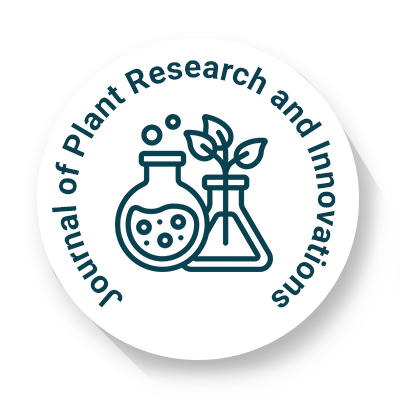
Journal of Plant Research and Innovations
OPEN ACCESS

OPEN ACCESS
Plant bioremediation is a broad term encompassing all plant-based strategies used to improve environmental health by detoxifying, stabilizing, and filtering pollutants from soil, water, and air. It leverages the natural abilities of plants, along with their associated microbial communities, to degrade, absorb, or neutralize harmful contaminants. This approach plays a crucial role in mitigating the adverse effects of industrial activities, mining operations, agricultural runoff, and chemical spills. By improving soil structure, increasing microbial diversity, and reducing pollutant mobility, plant bioremediation contributes to long-term ecological balance. The success of this method depends on various biological, chemical, and environmental factors, including plant species selection, contaminant characteristics, and site conditions. With advancements in plant genetics, microbiology, and biotechnology, researchers are continuously developing plant varieties with enhanced capabilities for absorbing, degrading, and accumulating toxic substances. The use of genetically engineered plants with higher tolerance to pollutants has further improved the efficiency of bioremediation techniques, making it a viable and sustainable alternative to traditional remediation methods.
Phytoremediation, a subset of plant bioremediation, specifically focuses on using plants to remove, stabilize, or degrade contaminants from the environment. It consists of several mechanisms, each targeting different types of pollutants. Phytoextraction involves the uptake of heavy metals and other toxic elements into plant biomass, allowing their removal through harvesting. Phytostabilization prevents contaminants from spreading by immobilizing them in the soil and plant roots, reducing their bioavailability. Phytodegradation relies on plant metabolic processes to break down organic pollutants into less toxic compounds, while rhizofiltration uses plant roots to absorb and filter heavy metals and other pollutants from water. These processes are influenced by various factors, such as soil composition, pollutant concentration, climate conditions, and microbial interactions in the rhizosphere. Identifying plant species with high remediation potential and improving their efficiency through genetic modification and microbial associations are key research areas in phytoremediation. The integration of phytoremediation with other remediation techniques, such as soil amendments and microbial-assisted degradation, enhances its effectiveness in pollution control. These plant-based strategies offer cost-effective, environmentally friendly solutions for remediating contaminated sites, contributing to sustainable land management and ecological restoration. As environmental concerns continue to grow, the role of plant bioremediation and phytoremediation in pollution reduction and habitat restoration remains a critical focus in environmental science and sustainable development.